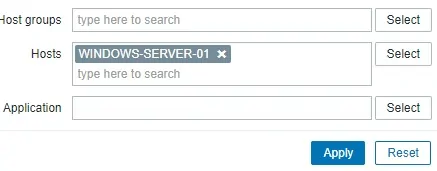Would you like to learn how to use Zabbix WMI monitoring feature on Windows? In this tutorial, we are going to show you how to configure Zabbix to monitor WMI items on a computer running Windows.
• Zabbix version: 4.2.6
• Windows version: 2012 R2
The computer running Windows must have the Zabbix agent installed.
Hardware List:
The following section presents the list of equipment used to create this Zabbix tutorial.
Every piece of hardware listed above can be found at Amazon website.
Zabbix Playlist:
On this page, we offer quick access to a list of videos related to Zabbix installation.
Don't forget to subscribe to our youtube channel named FKIT.
Zabbix Related Tutorial:
On this page, we offer quick access to a list of tutorials related to Zabbix installation.
Zabbix Agent Configuration Required
First, the Zabbix agent installed on the Windows computer must be configured in Active mode.
Here is an example of a Zabbix agent configuration file in Passive mode: zabbix_agentd.conf
Here is an example of a Zabbix agent configuration file in Active mode: zabbix_agentd.conf
We need to test the WMI communication.
On the Windows computer, open a Powershell command-line and try to get the logged username.
You have finished the required part of the configuration.
Tutorial - Zabbix Monitor Windows Log File
Now, we need to access the Zabbix server dashboard and add the Windows computer as a Host.
Open your browser and enter the IP address of your web server plus /zabbix.
In our example, the following URL was entered in the Browser:
• http://35.162.85.57/zabbix
On the login screen, use the default username and default password.
• Default Username: Admin
• Default Password: zabbix

After a successful login, you will be sent to the Zabbix Dashboard.

On the dashboard screen, access the Configuration menu and select the Host option.

On the top right of the screen, click on the Create host button.
On the Host configuration screen, you will have to enter the following information:
• Host Name - Enter a Hostname to monitor.
• Visible Hostname - Repeat the hostname.
• New group - Enter a name to identify a group of similar devices.
• Agent Interface - Enter the IP address of the Hostname.
Here is the original image, before our configuration.

Here is the new image with our configuration.

Click on the Add button to include this host on the Zabbix database.
On the dashboard screen, access the Configuration menu and select the Host option.

Locate and click on the hostname that you created before.
In our example, we selected the hostname: WINDOWS-SERVER-01
On the Host properties screen, access the Applications tab.
On the top right part of the screen, click on the Create application button.
On the Host applications screen, create a new application named: WMI

After finishing the Application creation, access the Items tab.
On the top right part of the screen, click on the Create item button.
On the Item creation screen, you need to configure the following items:
• Name: Username
• Type: Zabbix Agent (Active)
• Key: wmi.get["root\cimv2","SELECT username from Win32_ComputerSystem2"]
• Type of Information: Text
• Update interval: 60 Second
• Application: WMI

Click on the Add button to finish the Item creation and wait 5 minutes.
In order to test your configuration, access the Monitoring menu and click on the Latest data option.

Use the filter configuration to select the desired hostname and click on the Apply button.
In our example, we selected the hostname WINDOWS-SERVER-01.

You should be able to see the results of your Windows log file monitoring using Zabbix.

Congratulations! You have configured the Zabbix WMI monitoring feature on Windows.
